
Owen Holland, “‘These Christs that die upon the barricades’: Victorian Responses to the Paris Commune”
The Paris Commune of 1871 provoked several different kinds of reaction in Victorian Britain during the fin de siècle. William Morris and Oscar Wilde (amongst others) celebrated the Commune in their poetry and political writings, re-assessing the event’s meaning in the context of the 1880s socialist revival, while the republicanism of Algernon Charles Swinburne led him to adopt a more hostile attitude in the immediate aftermath of the revolution. Several other writers sought to think through their confusion in response to the Commune, including John Ruskin, Gerard Manley Hopkins and George Gissing, but they all did so against the consistent pressure of conservative reaction, exerted in the form of periodical and newspaper commentary, and sensationalised misrepresentation of the Communards’ deeds and aims. This article surveys some of the main contours of the Commune’s discursive afterlives in Britain, arguing that the British response was characterised by multiple forms of political and aesthetic contestation.
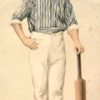
Joanne Wilkes, “The Implications of the Cricket Match in Anthony Trollope’s The Fixed Period (1882)”
Anthony Trollope’s late novel The Fixed Period (1882), set a century in the future in a fictional South Pacific island, has often puzzled readers. It deals with a policy of compulsory euthanasia in the politically independent island of Britannula, a policy that is overturned when the island is taken over by Britain. My article aims to explain an odd interlude in the novel: a cricket match in Britannula between a local and an English team. Drawing on the history of cricket matches between England and its antipodean colonies around the time of the novel’s composition, I argue that the cricketing interlude serves to highlight the text’s take on the Britannulans. This community, living a hundred years in the future, claims to be autonomous, but it possesses a mindset still governed by a sense of Britain as the “mother country.” Hence Trollope emphasizes how difficult it is for settler societies to shake off such attitudes and ties.
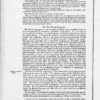
Matthew Jones, “On Nineteenth-Century Welsh Literacies, and the ‘Blue Book’ Education Reports of 1847”
This essay considers the 1847 Reports of the Commissioners of Inquiry into the State of Education in Wales, better known as the “Blue Books,” which alleged that Wales’s Welsh-speaking population was benighted, immoral, superstitious, and barbarous, and in need of English-language education. These factors were said to be compromising the country’s modernization while also, in more quiet ways, threatening British society more broadly. The Welsh language was the primary target, and it was deemed antiquated and unfit for commercial and imperial life. Through the Welsh language, the Blue Books also inveighed against Welsh motherhood, Wales’s increasing Nonconformity, and its recharged and growing literary culture. I place the Blue Books in a larger nineteenth-century Welsh context, focusing especially on how rising rates of literacy and religiosity across the country countered the Blue Books’ primary claims. I discuss with particular emphases the Welsh Calvinistic Methodist movement, the antiquarian movement, the revived eisteddfod literary festival, and the influences of Welsh women in Welsh society and as Welsh mothers. Furthermore, I argue that the Blue Books borrowed much colonialist rhetoric then in fashion that disparaged Irish, Indian, Chinese, and African people. With this in mind, the Blue Books fit in among contemporary colonial documents, and they construct the Welsh in similar manners to how other non-English populations were during this moment of Victorian Britain.
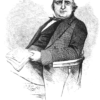
Janice Schroeder, “The Publishing History of Henry Mayhew’s London Labour and the London Poor”
Versions of Henry Mayhew’s massive social survey London Labour and the London Poor appeared in several publishing formats, including newspaper column, weekly serial, live stage show, and bound volume. This article traces the republication and remediation of London Labour alongside Mayhew’s repackaging of his interviews with London “street-folk” from 1849 onwards. I offer a succinct, accessible account of the complex publishing history of the text, from print newspaper column to digital edition.

Nathan K. Hensley and John Patrick James, “Soot Moth: Biston Betularia and the Victorian End of Nature”
The darkened form of the common peppered moth, biston betularia f. carbonaria, known colloquially as the “soot moth,” was virtually unknown in England prior to 1800. The first reliable field specimen was collected outside of Manchester in 1848, plucked from the heart of Victorian England’s rapidly expanding coal economy. With their black abdomen and wings, these darkened morphs contrasted starkly with what had once been the more frequent form: a white-bodied moth lightly speckled with black and brown. As scientific studies now show, the black morph appeared as a result of industrial manufacture, first around major production centers and later around London. This article traces those studies to argue that the emergence of this particular form of melanistic moth signals a sharp pivot in Britain’s environmental history: its appearance augurs a new fossil modernity, in which coal replaces wood and animal fats as the primary source of English energy, and as stored sunlight, archived as coal, takes center stage as the driver for an endless steam-powered project of worldmaking. Tracing studies of “industrial melanism” to its origins at the beginning of this extractive, fossil-fueled modernity helps us see the soot moth’s emergence as a watershed moment in the history of life and a new chapter in humankind’s relationship to the category of nature.
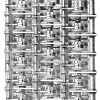
Roger Whitson, “The Difference Engine: 1832, 1855, 1876, 1991, 2002, 2008”
The difference engine is a case study in what media archaeologists see as a diversity of temporalities entangling the production and functionality of technological media. Only an unfinished prototype, what was called “Babbage’s beautiful fragment” existed of Babbage’s designs during his lifetime. Even so, many machinists created their own variations of the difference engine after Babbage’s death. This phenomenon, and the many troubles Babbage himself ran into regarding the materials used to create the difference engine, demonstrates that the machine’s functionality exceeded its inventor’s intentions and awareness.
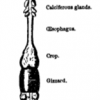
Anna Henchman, “Charles Darwin’s Final Book on Earthworms, 1881”
This article focuses on the publication of Darwin’s final book (1881) in the context of Darwin’s larger attempts to resist the habitual anthropocentrism of human beings. It begins with Darwin’s discussion of animal cognition and the senses of worms. It concludes with his emphasis on the significant effects worm digestion has on the landscape and the fertility of the earth. The article links Darwin’s Worms Edwin Abbott’s 1884 novella Flatland, arguing that both texts are engaged in dismantling human perceptions that stem from possessing a highly visual brain, and that both throw doubt on the belief that a single objective world exists independent of particular observers.
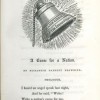
Denae Dyck and Marjorie Stone, “The ‘Sensation’ of Elizabeth Barrett Browning’s Poems before Congress (1860): Events, Politics, Reception”
Elizabeth Barrett Browning’s Poems before Congress paradoxically addresses a political event that never took place: a meeting of European powers to discuss the “Italian question” planned for January of 1860. Nevertheless, the collection addresses several momentous historical developments, including the Second Italian War of Independence in 1859, the intervention of Napoleon III of France in the Italian struggle, and the international conflict his intervention precipitated. Indeed, the book’s publication and the sensation it created in themselves constitute a plurality of events, since the collection appeared under differing titles in England and America and encountered differing responses in each country. Contrary to the still dominant critical view that the volume was almost universally denounced, its reception was shaped by diverse locations, shifting chronological contexts, and conflicting political affiliations. Close analysis of the reviews underscores the importance of these wider contexts, which influence what otherwise appear to be primarily literary or aesthetic judgements. At the same time, analysis of varying responses to not only “A Curse for a Nation” but also “Napoleon III in Italy” and other poems in the volume demonstrates a number of recurring points of contention. These include the collection’s title, the politics of interventions across national borders, English liberalism, the nature of democracy, cosmopolitanism versus nationalism, women writers in relation to politics, poetic form, and, most of all, EBB’s representation of Napoleon III—the issue that is front and centre in most of the 1860s reviews and that shaped, in turn, reactions to all the rest.
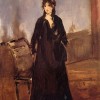
Elizabeth Berkowitz, “The 1910 ‘Manet and the Post – Impressionists’ Exhibition: Importance and Critical Issues”
“The 1910 ‘Manet and the Post-Impressionists’ Exhibition: Importance and Critical Issues” summarizes both the key historical aspects of the 1910 “Manet and the Post-Impressionists” exhibition, and the historiographic disputes that have arisen in relation to it. This article addresses the degree to which the term and art historical category “Post-Impressionism,” coined for this exhibition, represents a critical construction, rather than a genuine stylistic demarcation. In addition, this article counters the scholarly misperception that the vitriolic response to the 1910 exhibition was a product of British cultural ignorance of late-nineteenth- and early-twentieth-century continental Modern art.

Carol Senf, “‘The Fiddler of the Reels’: Hardy’s Reflection on the Past”
While Thomas Hardy was invited to submit something to a special number of Scribner’s Magazine that was published to celebrate the 1893 Chicago World’s Fair, the story he submitted, “The Fiddler of the Reels,” focuses on several characters whose lives are impacted by the Great Exhibition of 1851. The focus on the two world’s fairs might lead readers to believe that Hardy was an advocate of the kinds of scientific and technological progress that such spectacles tended to celebrate. However, Hardy’s story demonstrates the power of more primitive forces and actually undermines such an easy belief in progress. By ending with a character that clearly represents primal forces that are never suppressed, the story demonstrates that the power of the primitive past is never far from the surface and may emerge at any moment to triumph over the representatives of the present.
